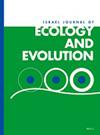Gecko diversity: a history of global discovery
IF 0.8
4区 环境科学与生态学
Q3 ECOLOGY
引用次数: 14
Abstract
1935 gecko species (and 224 subspecies) were known in December 2019 in seven families and 124 genera. These nearly 2000 species were described by ~950 individuals of whom more than 100 described more than 10 gecko species each. Most gecko species were discovered during the past 40 years. The primary type specimens of all currently recognized geckos (including subspecies) are distributed over 161 collections worldwide, with 20 collections having about two thirds of all primary types. The primary type specimens of about 40 gecko taxa have been lost or unknown. The phylogeny of geckos is well studied, with DNA sequences being available for ~76% of all geckos (compared to ~63% in other reptiles) and morphological characters now being collected in databases. Geographically, geckos occur on five continents and many islands but are most species-rich in Australasia (which also houses the greatest diversity of family-level taxa), Southeast Asia, Africa, Madagascar, and the West Indies. Among countries, Australia has the highest number of geckos (241 species), with India, Madagascar, and Malaysia being the only other countries with more than 100 described species each. As expected, when correcting for land area, countries outside the tropics have fewer geckos.壁虎多样性:全球发现史
截至2019年12月,已知壁虎有7科124属1935种(和224亚种)。这近2000个物种被约950个个体描述,其中100多个个体描述了10多个壁虎物种。大多数壁虎物种是在过去40年里发现的。目前已知的所有壁虎(包括亚种)的主要类型标本分布在全球161个标本集中,其中20个标本集中约占所有主要类型的三分之二。大约有40个壁虎分类群的原始模式标本已经丢失或未知。壁虎的系统发育已经得到了很好的研究,76%的壁虎(其他爬行动物的DNA序列为63%)的DNA序列都是可用的,并且形态特征正在数据库中收集。从地理上讲,壁虎分布在五大洲和许多岛屿上,但物种最丰富的是大洋洲(也有最多样化的科级分类群)、东南亚、非洲、马达加斯加和西印度群岛。在所有国家中,澳大利亚的壁虎数量最多(241种),印度、马达加斯加和马来西亚是仅有的三个拥有超过100种描述物种的国家。正如预期的那样,当校正陆地面积时,热带以外的国家壁虎较少。
本文章由计算机程序翻译,如有差异,请以英文原文为准。
求助全文
约1分钟内获得全文
求助全文
来源期刊

Israel Journal of Ecology & Evolution
环境科学-进化生物学
CiteScore
2.10
自引率
0.00%
发文量
7
审稿时长
>36 weeks
期刊介绍:
The Israel Journal of Ecology and Evolution includes high-quality original research and review papers that advance our knowledge and understanding of the function, diversity, abundance, distribution, and evolution of organisms. We give equal consideration to all submissions regardless of geography.
 求助内容:
求助内容: 应助结果提醒方式:
应助结果提醒方式:


